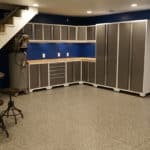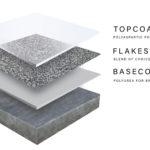What are Polyurea and Polyaspartic Coatings and how do they compare to Epoxy?
Polyurea is a subgroup of polyurethane. It is formed when isocyanates react with water or polyetheramines to create a urea linkage. Like epoxy, it is a 2-part component that mixes resin with a catalyst to cause the curing reaction that makes the material hard. With 98% solids, polyurea is 4x stronger and yet 98% more flexible than epoxy. It is highly elastic (300%) and will accommodate expansion, contraction and relative movement within concrete without cracking. It has a service history that exceeds 25 years.
Resistance, Maintenance and Stability
Polyurea is resistant to salt, oil, gas and other harsh chemicals up to battery acid. Just simply sweep up any debris and clean with your favorite [non-corrosive] cleaning product and your floor will stay looking beautiful for many years. Epoxy is not impervious to staining. Although it can help, epoxy can still be stained or damaged from chemicals like salt, street de-ice fluid, oil and gas.
Unlike epoxy, polyurea is 100% UV stable so it is able to be applied outdoors and will not fade or discolor. It will also not get hot to the touch from the sun, so you can go barefoot with ease on those hot summer days.













